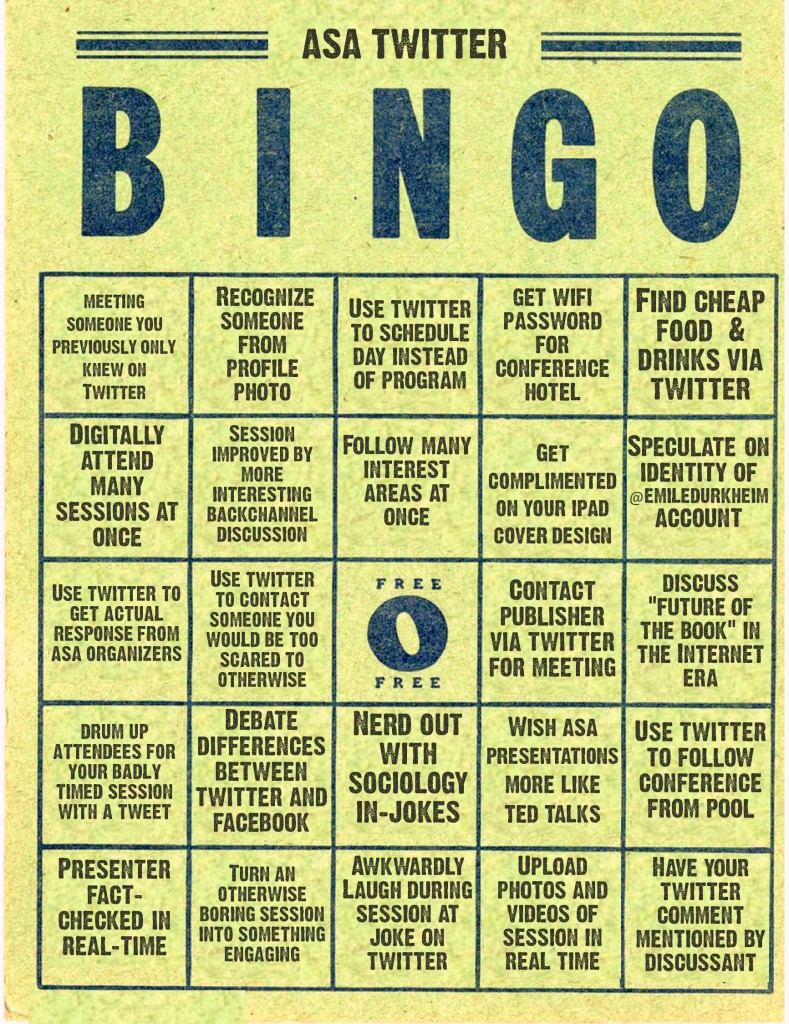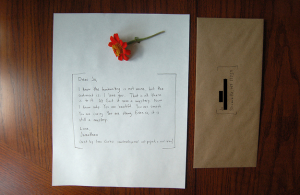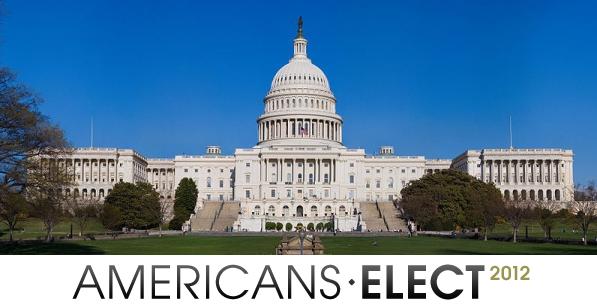
There was a popular “bingo card” for the annual meetings of the American Sociological Association held last week in Las Vegas. It poked a bit of fun at sociologists and the meeting itself. Nathan Jurgenson’s reaction was that the card itself revealed much about the sociological discipline and the problems with the annual meetings. He wrote a post here on Cyborgology calling for a more positive bingo card that might be helpful to improve the conference experience rather than just complaining about what is wrong. It is easy to be annoyed, much harder to be constructive.
CUNY sociologist Jessie Daniels responded to this call, and, toegther, we have created a more constructive and useful Bingo card that looks specifically at how to improve a conference by augmenting one’s experience with Twitter.
The card describes how conferences in general benefit from engagement on both the physical and digital levels. Conversations taking place move onto the web, and discussions in the “backchannel” flow back into physical space. In fact, we noted this trend during the Theorizing the Web conference this past spring, calling it an “augmented conference.”





